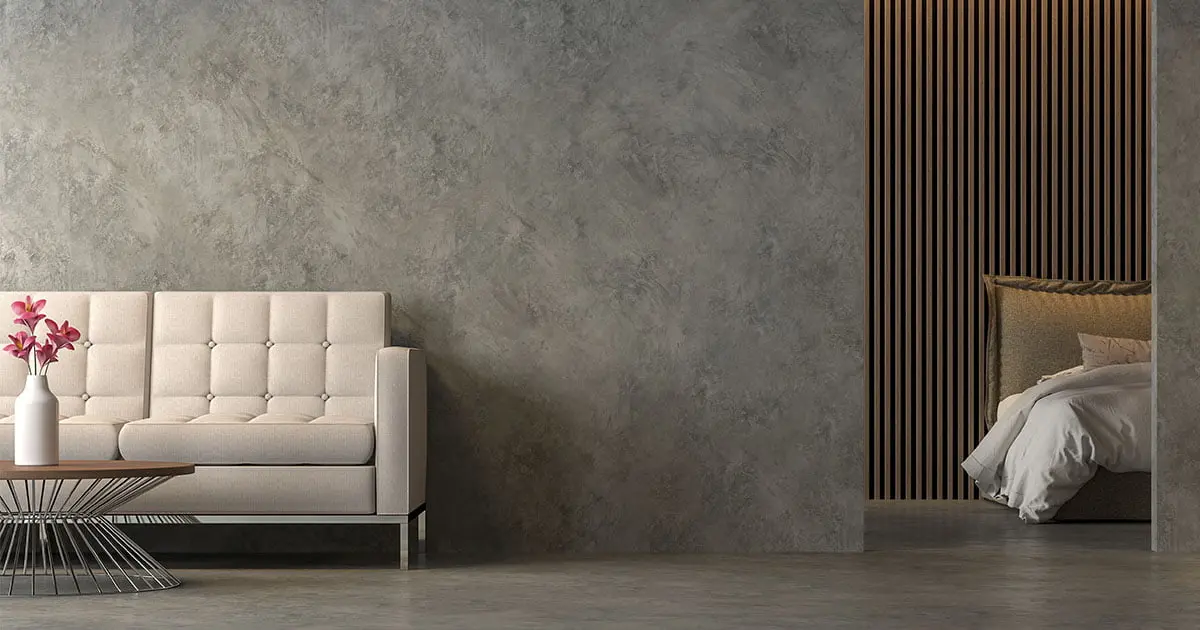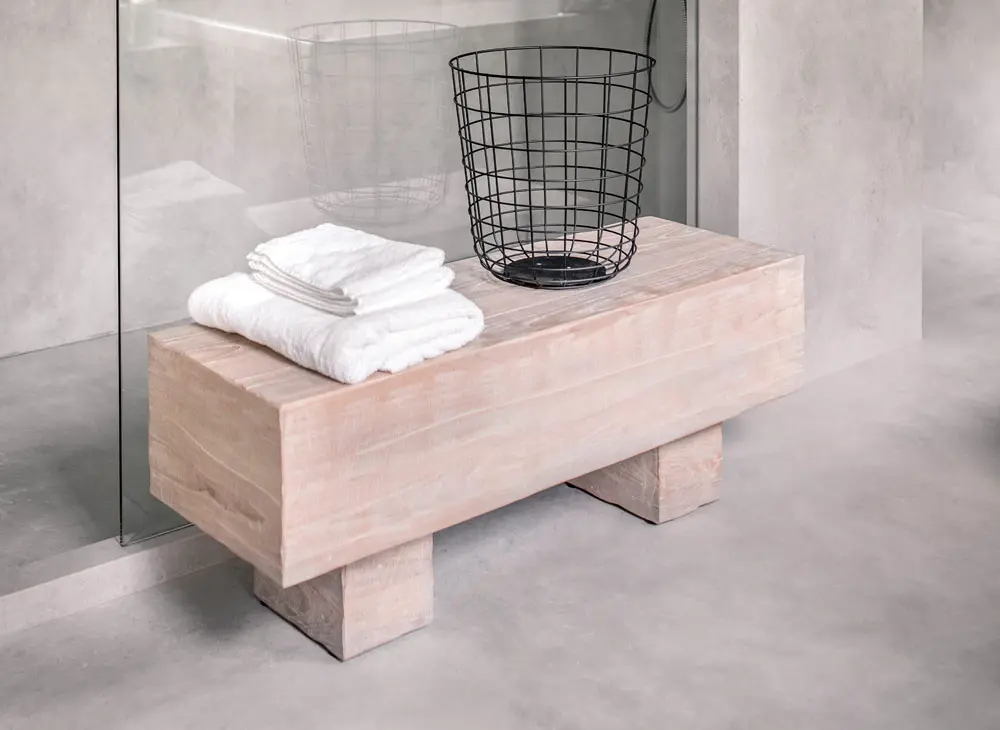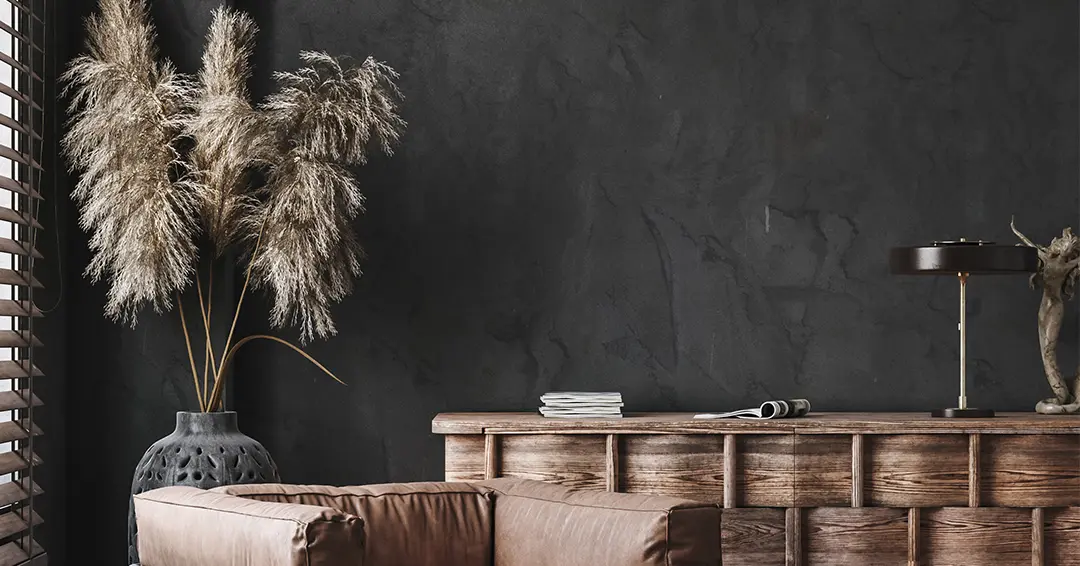Welcome to the fascinating world of microcement. A material that has become a favorite of designers, architects and interior decorators due to its versatility, resistance, and its ability to create unlimited textures and finishes.

Microcement is a continuous coating that is applied over an existing surface, whether it be walls, floors or even furniture, and provides a modern and elegant look to any space. But what really makes microcement so special are the textures and finishes that can be created with it.
Next, we will focus on the textures of microcement and how they can be used to achieve different effects in interior decoration. We will look at the different types of textures, from the finest to the roughest or embossed, and how they can be combined with different finishes and colors of microcement to achieve a unique and customized result.
Fine microcement is one of the most used due to its smooth and delicate texture, ideal for achieving a uniform and elegant finish on any surface. But we can also find rough microcements, which add a touch of rusticity and authenticity to any space, or embossed microcements, which allow creating surprising three-dimensional effects.
In addition to textures, microcement also offers a wide variety of finishes that can be applied over any type of texture, from polished and aged to tinted or shiny, through matte or satin. Each finish provides a different and unique effect, which makes microcement a very versatile material.
Lastly, we cannot forget about the colors of microcement, which range from the most neutral and elegant tones, such as white, gray or beige, to the most striking and bold colors, like cool tones of blue or green or warm tones of red or yellow. The combination of textures, finishes and colors allows for creating endless possibilities for interior design and decoration.
In summary, microcement is a fascinating material that allows for creating unlimited textures and finishes, adapting to any style and need. In the following sections, we will delve into the different types of textures, finishes, and colors of microcement, so that you can get inspired and create your own personalized space with this highly versatile material.
Microcement Textures
Microcement is a versatile and durable material that has become one of the most popular options for both indoor and outdoor decoration. One of the most notable characteristics of microcement is its wide variety of textures, which allow for the creation of unique and customized finishes for each project. In this section, we are going to explore the three main textures of microcement: fine microcement, rough microcement, and embossed microcement.
Fine Microcement
Fine microcement is the smoothest and most delicate texture of microcement. It is characterized by its smooth and uniform finish, which imparts a modern and minimalist look to any space. It is ideal for surfaces such as walls, floors, and countertops, as it adapts perfectly to any shape or size.
One of the advantages of fine microcement is that it can be applied in a wide variety of colors, allowing for the creation of unique designs and combinations. Additionally, its surface is very easy to clean and maintain, making it an ideal option for spaces that require high hygiene levels, such as bathrooms and kitchens.
Rough Microcement
Rough microcement is a coarser and more rustic texture than fine microcement. It is characterized by its relief finish, which creates a visually appealing and different look. It is ideal for surfaces such as walls and floors, as it provides a natural and organic appearance.
One of the advantages of rough microcement is that it is very resistant and durable, which makes it an ideal option for high traffic areas. In addition, its texture creates a non-slip effect, making it ideal for bathroom and pool floors.
Relief Microcement
The relief microcement is the most creative and original texture of microcement. It is characterized by its ability to create three-dimensional designs on any surface, allowing you to create unique and personalized spaces. It is ideal for walls, ceilings, columns, and any other surface that requires an original and different design.
One of the advantages of relief microcement is that it can be customized according to the preferences of the client, allowing the creation of unique designs adapted to each project. In addition, its resistance and durability make it an ideal option for high traffic areas, such as entrances and halls.
Microcement offers a great variety of textures that allow the creation of unique and personalized finishes for each project. From fine microcement to relief microcement, each texture offers specific advantages that adapt to different needs and preferences. If you are looking for a versatile, resistant material with a wide variety of options, microcement is undoubtedly an excellent choice.

Microcement finishes
Although the texture is one of the most important aspects of microcement, finishes are not far behind. These can completely change the appearance and the feeling that microcement gives off in a room. Here we present the different finishes you can choose:
Polished finish
This finish is characterized by being very smooth and shiny, which makes it a popular option for floor surfaces. The process to achieve this finish involves polishing the microcement several times, which gives it a unique shine. It's important to note that the polished finish can be slippery, so it may not be the best option for some areas, like bathrooms or kitchens.
Polished and aged finish
This finish combines the best of both worlds: the smoothness of the polished finish and the aged look of rustic finishes. The process to achieve this finish involves creating a worn effect on the microcement after it has been polished. This creates an aged appearance that can be especially attractive for interiors with a more rustic style.
Tinted finish
This finish allows the microcement to be tinted with various colors, which makes it perfect for those who want to add a personal touch to their walls or floors. The pigments used to dye the microcement are resistant and long-lasting, which means that the color will not fade over time.
Gloss finish
The gloss finish is characterized by its high shine, which reflects light and makes the microcement appear even brighter. It is perfect for those looking for a finish that is eye-catching and modern. However, like the polished finish, it can be slippery, so it is not the best option for damp areas.
Matte finish
Unlike the gloss finish, the matte finish does not reflect light. Instead, it has a more muted and subtle look. It is perfect for those looking for a more natural and organic look. In addition, this finish is less slippery than the gloss finish, making it an ideal choice for damp areas.
Satin finish
The satin finish sits between the matte finish and the gloss finish. It is less shiny than the gloss finish, but brighter than the matte finish. This finish is very versatile and works well in a variety of interiors. It is especially suited to high-traffic areas such as hallways or stairs.
Microcement colors
Microcement is not only a versatile option in terms of texture and finish, but it also offers a wide variety of colors to fit any decorative style. The beauty of microcement lies in how you can play with the colors to create surprising and unique effects. In addition, microcement’s ability to trap light influences how colors are perceived, causing them to change according to the time of day or the intensity of the light.

Black
Black is a timeless color that brings elegance and sophistication to any space. In microcement, black is particularly popular for creating contrasts with other lighter colors, and is also used in combination with glossy finishes to create an attractive mirror effect. A black microcement wall in a bathroom, for example, can create a modern and sophisticated ambiance.
Gray
Gray is a neutral color that never goes out of style. In microcement, gray is especially versatile, since there is a wide variety of shades of gray, from the lightest and most subtle to the darkest and most dramatic. Gray is perfect for creating an elegant and sober environment, and it is a good choice for surfaces that require a touch of calm, such as walls and floors in study or work areas.
White
White is a classic and bright color that gives a sense of spaciousness and brightness. In microcement, white is a popular choice for living areas and bedrooms, as it conveys a sense of cleanliness and purity. White can also be used in combination with other colors to create contrasts and highlight certain areas of a room.
Beige
Beige is a warm and welcoming color that gives a sense of tranquility. In microcement, beige is a popular choice for surfaces in rest areas, such as bedroom walls and floors. Like white, beige can also be used in combination with other colors to create contrasts and highlight specific areas of a room.
Sand
The sand color is a popular choice for those seeking a natural and relaxing atmosphere. In microcement, the sand color is a popular choice for surfaces in outdoor spaces, such as terraces and pools. The sand color can also be used indoors to create a sense of continuity with the natural environment.
Cool colors: blues and greens
Cool colors, such as blue and green, are ideal for creating relaxing and serene environments. In microcement, these colors can be used to give a feeling of freshness in spaces such as bathrooms and kitchens. Lighter shades of blue and green can also help create a sense of spaciousness in small spaces.
Warm colors: reds and yellows
Warm colors, such as red and yellow, bring energy and vitality to any space. In the case of microcement, they are shades that are very attractive and versatile. Red, for example, can create a warm and welcoming environment, ideal for spaces like the living room or bedroom. On the other hand, yellow can create a sense of space and brightness, making it highly recommended for small spaces like bathrooms.
In conclusion, microcement is a highly versatile option for coating any surface, thanks to its wide variety of textures, finishes, and colors. From the most sober and refined tones such as black and gray, to the brightest and warmest such as yellow and red, microcement offers everything you need to create a unique and personalized environment at home.
If you are looking for a modern and durable option to renovate your spaces, do not hesitate to consider microcement. We are sure you will be impressed with the results.